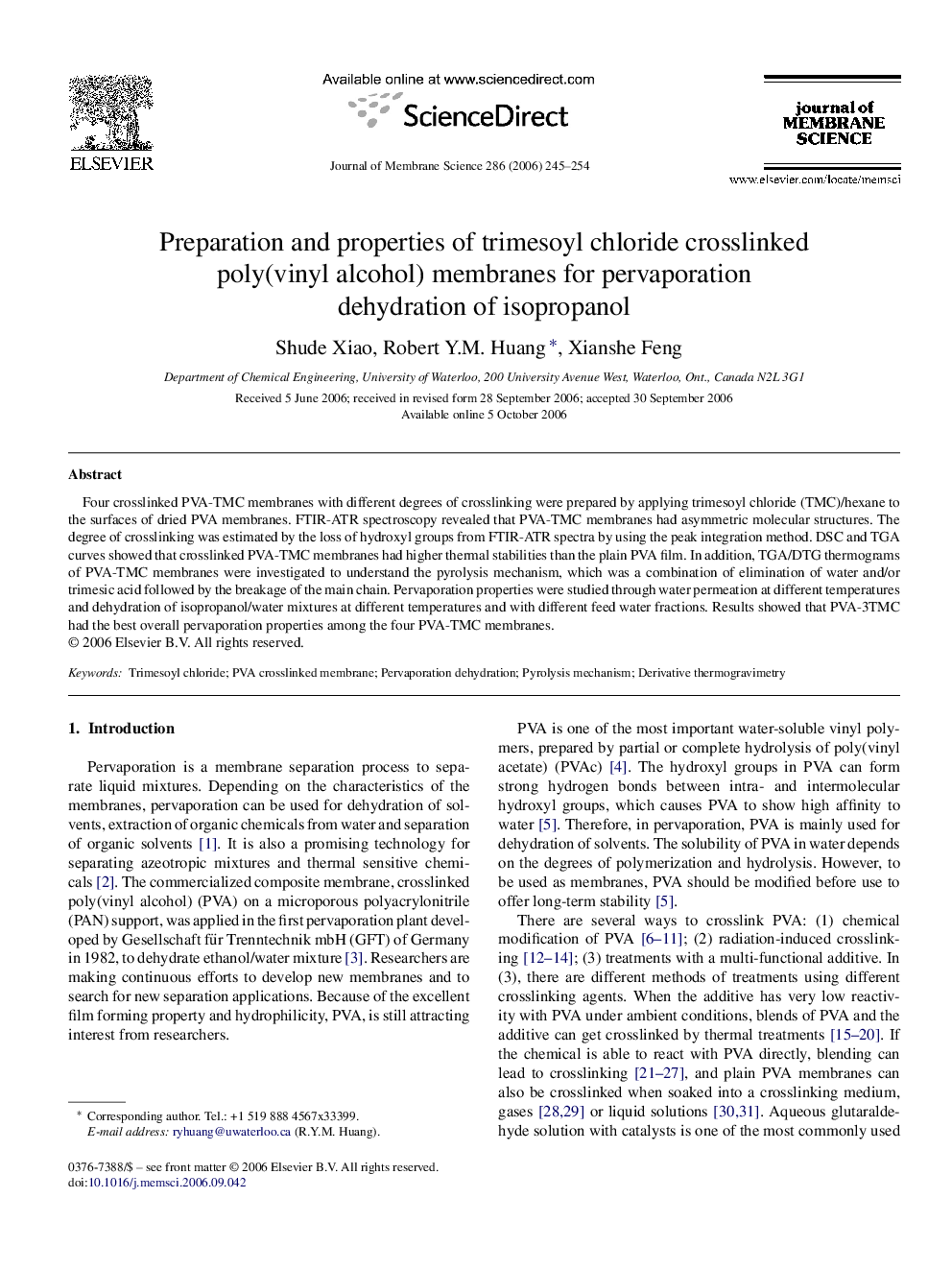| Article ID | Journal | Published Year | Pages | File Type |
|---|---|---|---|---|
| 639009 | Journal of Membrane Science | 2006 | 10 Pages |
Four crosslinked PVA-TMC membranes with different degrees of crosslinking were prepared by applying trimesoyl chloride (TMC)/hexane to the surfaces of dried PVA membranes. FTIR-ATR spectroscopy revealed that PVA-TMC membranes had asymmetric molecular structures. The degree of crosslinking was estimated by the loss of hydroxyl groups from FTIR-ATR spectra by using the peak integration method. DSC and TGA curves showed that crosslinked PVA-TMC membranes had higher thermal stabilities than the plain PVA film. In addition, TGA/DTG thermograms of PVA-TMC membranes were investigated to understand the pyrolysis mechanism, which was a combination of elimination of water and/or trimesic acid followed by the breakage of the main chain. Pervaporation properties were studied through water permeation at different temperatures and dehydration of isopropanol/water mixtures at different temperatures and with different feed water fractions. Results showed that PVA-3TMC had the best overall pervaporation properties among the four PVA-TMC membranes.
